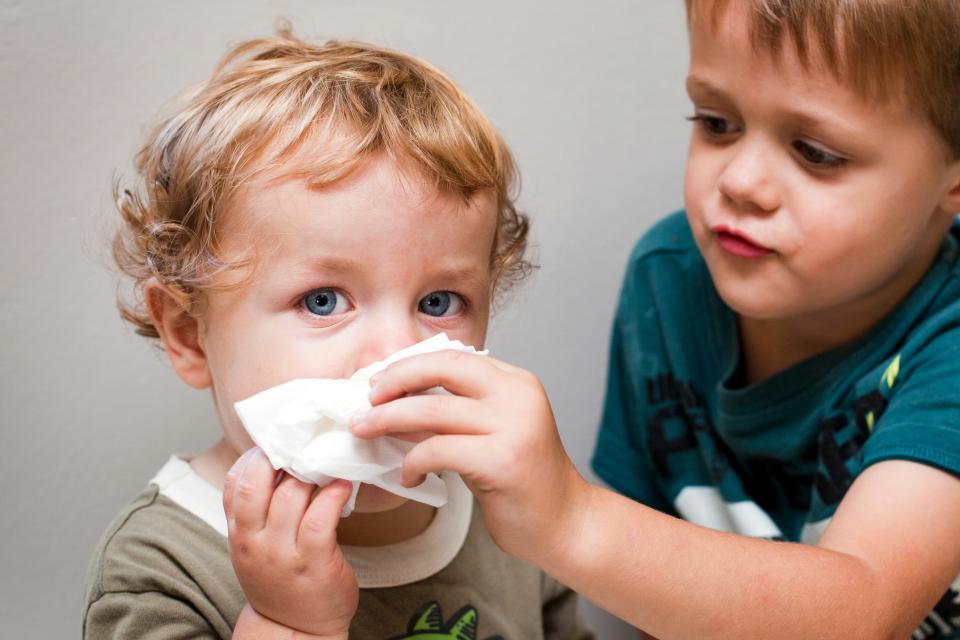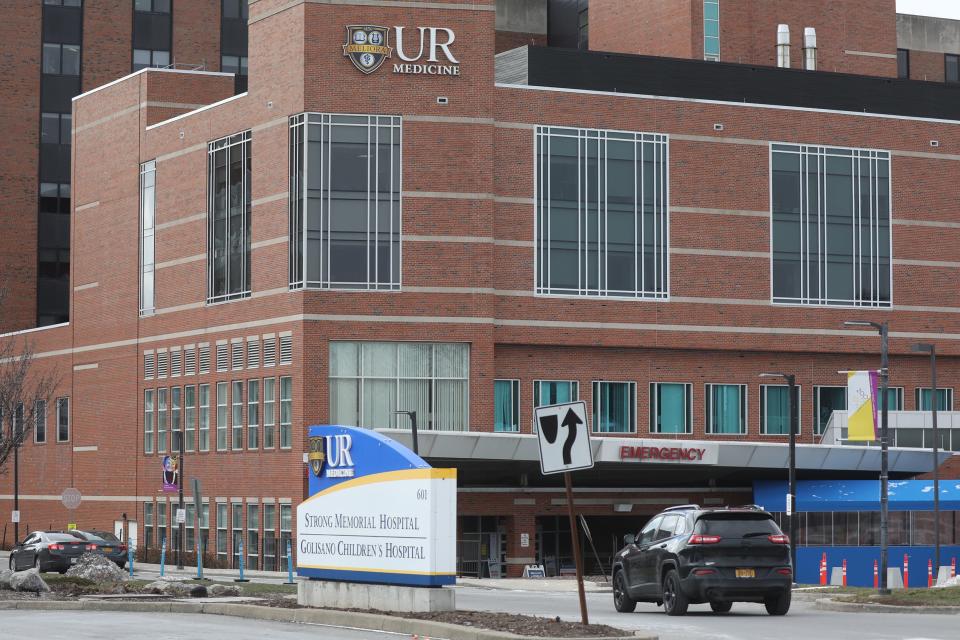Will flu, RSV, COVID overwhelm New York's children's hospitals? What parents need to know
As waves of severely ill children slammed New York’s pediatric intensive care units recently, Dr. Sankaran Krishnan struggled to comfort scores of distraught parents arriving at his children's hospital.
Carrying toddlers struggling to breathe, mothers and fathers desperately asked why a seemingly routine cold rapidly transformed into a life-threatening respiratory illness, recalled Krishnan, chief of pediatric pulmonology at Maria Fareri Children's Hospital in Westchester County.
He also recounted their main question: “There are so many kids in the class or day care, so why is mine in the ICU?’”
“There’s no easy answer to that; we just try to support them,” Krishnan added, “and make clear the vast majority of children will get better and go home.”
The rise in kids being hospitalized comes as unseasonably early outbreaks of respiratory illnesses are setting record-breaking paces in New York and contributing to a hospital capacity crunch in some regions.
Are New York’s pediatric hospital beds overwhelmed?
Yet despite public health alerts warning pediatric hospitals in many other states are nearly overwhelmed, New York’s health system is faring better so far, state officials said.
The percentage of non-ICU pediatric hospital beds available statewide in New York is about 25%, Gov. Kathy Hochul said Wednesday, noting some hospitals upstate had comparatively worse staffing and bed shortages, in general.
State health officials did not immediately provide data on pediatric ICU capacity rates, or regional breakdowns of pediatric hospital bed capacity.
Hospital capacity: Hospitals in upstate NY ravaged by bed, staff shortages: 'It is not right for patients'
Respiratory illness: RSV symptoms, treatments explained. What parents need to know.
Maria Fareri Children's Hospital in Westchester is near capacity, but the system still currently has room to expand pediatric care with future surges by redeploying staff from other departments, Krishnan said.
Many of the children are getting treated and discharged quickly, he added, which eases some of the capacity concerns.
“It’s like a constant revolving door,” Krishnan said, noting the health system works to balance the resulting strain on workers of the ongoing patient surge.
“The pandemic, if nothing else, taught us to quickly swivel and use resources in an optimal way,” he said.
How many flu, RSV cases in NY?

Meanwhile, newly reported flu case numbers in New York are strikingly high after health officials issued an alert Oct. 7 about the early and aggressive flu season.
At this point last year, New York reported just 315 flu cases in the official tally of confirmed infections. This season, that number is 1,679, or five times higher, the latest state data through Oct. 16 show.
Similarly, New York’s flu season before COVID-19 hit in spring 2020 had about 186 cases by mid-October. That season, in the end, reported a record-high 199 pediatric flu deaths nationally, federal data show.
Rising medical costs: Patients could face service cuts at upstate NY hospitals as costs skyrocket
Read the investigation here: As COVID raged in New York hospitals, executives pocketed $73M in bonuses
Still, New York’s case count for respiratory syncytial virus, or RSV, remains comparable to prior seasons, despite RSV spikes in other states. That fact offers New York some potential relief from its troubling flu trend, as RSV deaths nationally among children under 5 total between 100 to 300 per year.
However, other rhinoviruses and enteroviruses that typically cause common colds − but can, in some cases, cause serious illnesses − are also spreading widely in New York, especially among children, and contributing to hospital capacity problems, health officials said.
COVID-19 also continued to strain New York's hospitals, which had about 2,000 coronavirus-related patients ages 5 to 19 since Aug. 1, state data show.
What is New York doing about hospital capacity?

Addressing the growing concern, Hochul on Wednesday detailed plans to sustain New York’s health system as infectious-disease surges are expected to worsen in coming weeks and months.
State health officials, in part, are stockpiling medical supplies and plan to shift resources and workers between regions to curb the worst outbreaks and support hospitals, as needed, she said.
“We’re always ready there to deploy people from one part of the state to another,” Hochul said, urging New Yorkers to stay up to date on vaccinations and consider wearing masks to limit the spread of viruses. She also noted state officials were not issuing a mask mandate.
This article originally appeared on New York State Team: Will flu, RSV, COVID overwhelm NY's children's hospitals?

